Do you need to know where someone or something is or was? Need to know that the grandparents are OK? Then perhaps the eTrak GPS Tracking Device by eTrak can be of help. It claims it can tell you where it is, using GPS, WiFi, and cellular triangulation, and then display the position on a map using your PC or smartphone. It sounds good, but I had to reset my expectations in order to appreciate its usefulness. When I began using the eTrak, I looked at it as a real-time location reporting device. It’s not, and because of this misconception I became frustrated and was ready to forget the whole thing, but after using the eTrak for a month, I can see how it would help in some applications. I’ll summarize those at the end of the review.
Features:
- Small and lightweight
- Personal Alert Button
- Geo-fence applications
- Track using your smartphone or computer
- Multiple devices supported
- Extended battery life
The unit itself is in the forefront of the photo. Included with the device is the charging dock, USB power cable, and supply and case.
The small hole on the bottom of the photo is actually an LED which indicates the status of the device. The circle is the panic button.
Here’s the backside.
The first thing I did when receiving the eTrak was to charge it. The next step is to pick a monthly plan and register for an account on their website. The process involves providing some personal information and the serial number of the eTrak.
In your account there are parameters to change that make the device work for you, such as where you want alerts sent allowing others to view the location of the eTrak on their PCs or smartphones.
Now that I had account information set, I adjusted the device settings. The most important setting for me is the tracking interval. This tells the eTrak device when it should send location data to the eTrak servers to ultimately be seen on my PC or smartphone. The default value was set to 30 minutes, but I wanted to get a closer fix to real-time activity. When I saw these settings, I came to the realization that the eTrak wouldn’t give me up-to the minute location information. The timeliness of the tracking is dependent upon the interval between the updates from the device. The smallest possible interval is every 5 minutes, which would run the battery out in a very short time. With it set to 15 minutes, I could expect at most 24 hours between charges. At the 24 hour setting, I’m sure you could get the several days claimed by the manufacturer.
The device on/off setting can be used when you carry the eTrak on a plane or wish to keep it in a charged condition when not using it. The device has no physical off switch. This is to eliminate the possibility of a loved one turning off the device when you’re trying to look out for them. The panic-off setting keeps little ones from playing with the button if they’re the ones who are being tracked.
One of the features I appreciated the most was the ability to set zones. These are geographical areas that can be set so that when the tracker either enters or leaves, you will receive either an email or text message, or both, informing you of the fact.
Here I’ve set up a zone for the local shopping mall, my grandsons’ daycare, and my granddaughter’s elementary school. If they are carrying the device and they enter or leave the zones, I will be notified. Zones are easy to set up. You can either give an address or use the map in the application to designate a point and then set the radius.
To test out the eTrak, I placed it in my wife’s purse before she went out shopping. I knew where she was going, and we kept in contact by cell, so I could judge the accuracy of the tracking.
Upon her arrival at the mall, I was notified that she had entered a zone by email and text message. I also received an alert at the web application. Accuracy was fairly good inside the mall, because the device was referencing WiFi access points to get location data.
The eTrak uses “hybrid” technology to get location data: WiFi access points, GPS signals, and cellular triangulation on Verizon towers. During my usage, I found the WiFi fixes to be the most accurate, with GPS coming within 100 of feet from the exact location, and cellular being useful only if you’re trying to target a nuclear device.
On her drive to and from the mall, results weren’t very promising, and even though I had set an interval of 15 minutes between location transmissions, sometimes it would be 30 – 40 minutes between updates. I was told that this could be because at the time interval, there was no WiFi, weak GPS signal, or no cell coverage at that moment. The accuracy during the drive home left something to be desired, too. It had her located 300 feet across a river from a store I knew she was visiting. This was probably due to the eTrak using cellular positioning at the time.
We kept using the eTrak with similar results as to its accuracy and speed of locating the device. The above map shows our trip back home from up North. What’s curious here is tracking point 8. We were nowhere near there. The closest we came was about 3.7 miles (6 kilometers) away. Also, on a recent trip around town, it showed one of the tracked locations in another state over 80 miles away. Results like this make me reluctant to depend upon the eTrak to locate a loved one who wandered off.
While on the Christmas day trip, I again tested out the panic button and within 30 seconds of pressing it, I was notified by email and text message and on my mobile device that it had been pressed.
As I mentioned at the beginning of this review, I had my reservations about the eTrak; however, I do see where it could be very useful, if not a necessary, addition to your security routine.
The panic button feature probably justifies the purchase of the eTrak. For $129 up front and $8.33 per month (if you pay $100 for a year in advance), it’s a small investment to insure the safety of those senior citizens in your life. Set the updating interval to 24 hours, and you’ll only need to charge it once a week.
If you have children in school and you’re worried about them being someplace they aren’t supposed to be, set a safety zone around the school so you’ll know when they enter and leave the campus. You could do the same to notify you when they get home, if you’re not there to receive them. Test out the operation of the safety zone before you depend upon it. I had to make some adjustments before I could get it to work reliably. And if you have to park on the street, throw one in your car, so if it gets stolen you can track it down.


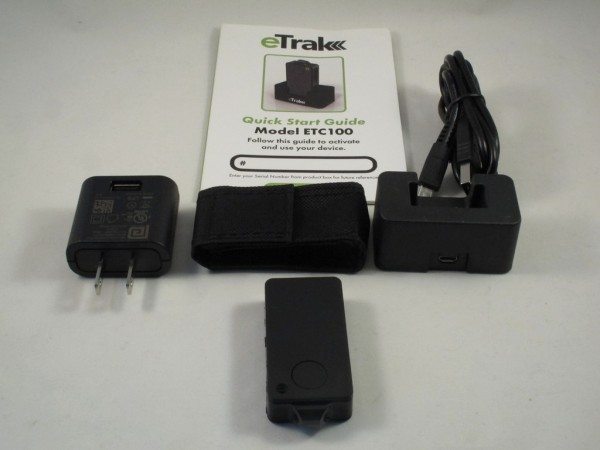
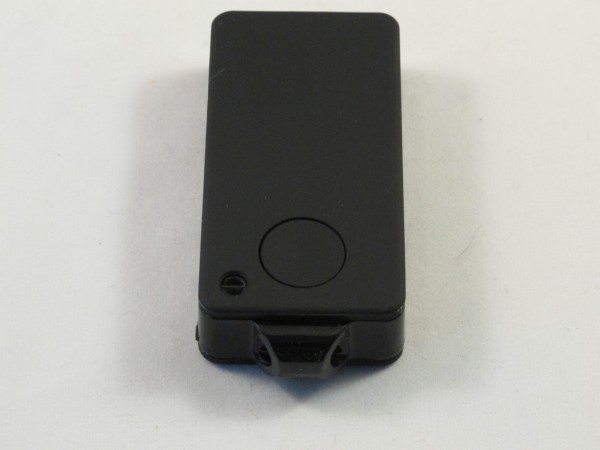
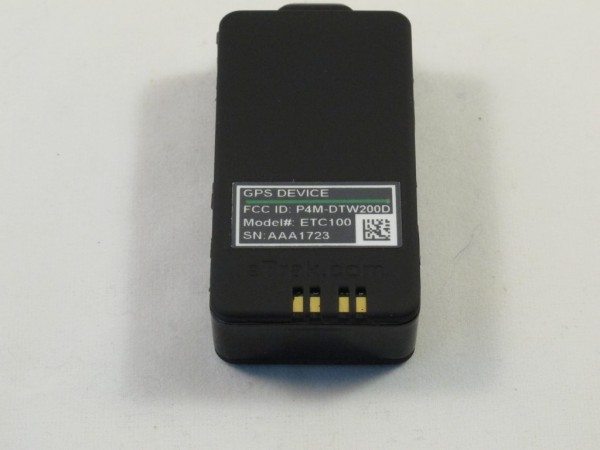
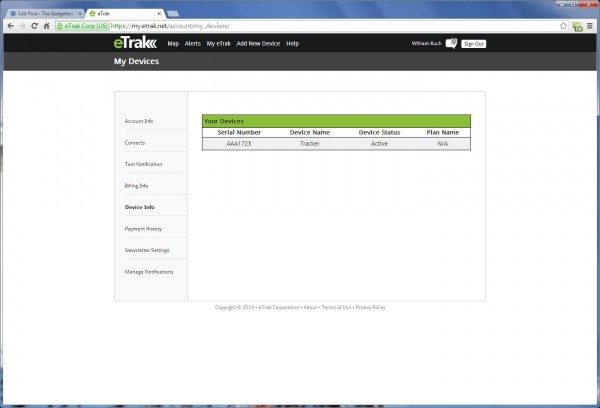
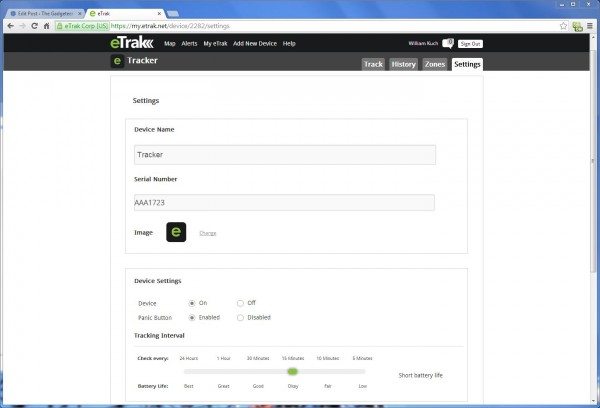
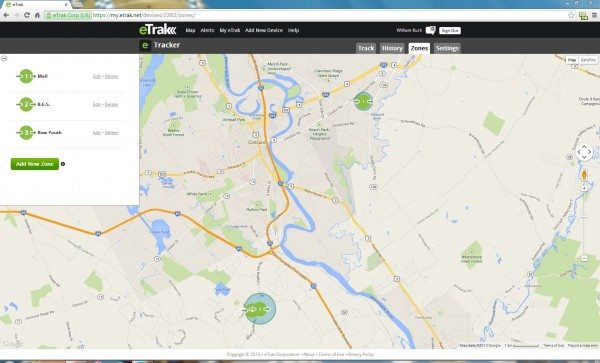
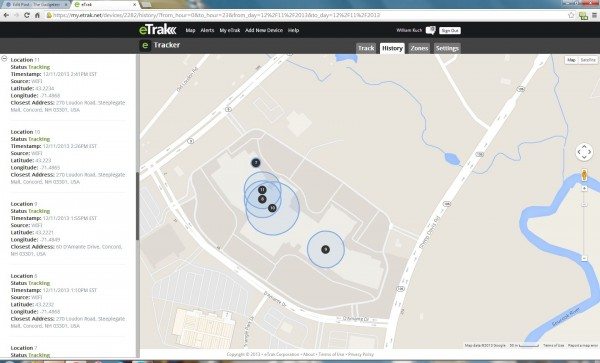
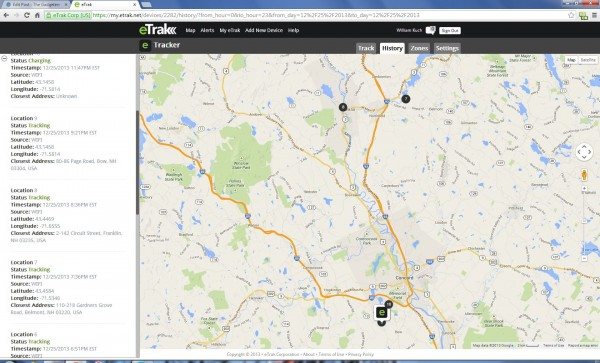
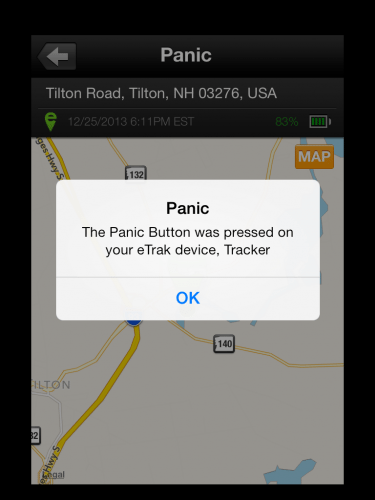


Gadgeteer Comment Policy - Please read before commenting
There are definitely a lot of uses for a GPS tracker. These will become growingly mainstream but hopefully prices can go below USD$60. The FBI should be a huge customer as well.